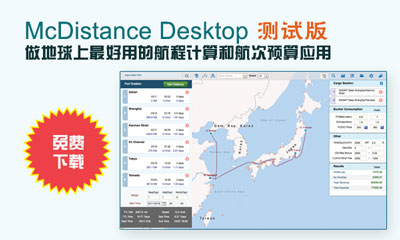
Ryan Molinaro, a terminal manager at this city’s oceanfront port, says he has never had so many executives schedule visits to his facilities as occurred over the past nine months. And he wasn’t the only one.
West Coast port terminals were inundated with inquiries from businesses across the U.S. that rely on the swift movement of their products, as port delays reached near gridlock. Mr. Molinaro said many of his customers, frustrated with their supply chain’s snail’s pace, insisted on coming to see and ask for themselves, “What is going on?”
All the pressure has management at the Southern California ports, which combined handle 40% of all containerized freight for the U.S., thinking about ways they can speed things up. Port terminals are developing new ways to organize cargo at the docks and systems for getting that cargo moving off the docks as quickly as possible. Software developed by a local technology startup called Cargomatic, a sort of Uber for moving cargo around the Los Angeles region, serves as one creative solution.
As contract talks between the Pacific Maritime Association and the International Longshore and Warehouse Union crept along, the line of massive ships in San Pedro Bay became longer and container stacks in the terminal yards rose higher. Even now, since a tentative contract was reached Feb. 20, experts estimate it could be as long as six months before shipping returns to normal, and the delays could cost retailers billions of dollars this year.
Gene Seroka, executive director at the Port of Los Angeles, says its facilities are capable of handling 14 million twenty-foot-equivalent containers annually, but at the moment, “we’re gridlocked at about 8.3 million.”
Larger container vessels have contributed to much of the congestion. More cargo is arriving now than terminals were accustomed to dealing with, Mr. Seroka said, and it is less organized on the ships than it used to be.
“Suddenly, the supply chain gets out of kilter,” he said, and the drawn-out labor negotiations only exacerbated the issue.
“There’s a call for innovation and creative ideas,” he said.
Some port terminals have begun setting up appointments for short-haul truck drivers. Rather than waiting while longshore workers extract containers from the stacks one by one, drivers arrive at an appointed time and—in theory, at least—wait only for the container they need to be extracted.
But appointments aren’t a popular option. Cargo owners, who have already endured delays, would prefer to get their products as soon as possible. Many drivers say they count on making three to four trips a day to the port in order to get by, and requiring appointments cuts down that number.
So some terminals have been trying a novel idea: When a truck driver shows up, put the first container off the top of the stack on the truck and send it on its way. No more moving other containers around to dig out specific cargo—just get it all off the dock as fast as possible.
The concept isn’t entirely new. Many megaretailers use what is known as free-flow or peel-off operations at the ports. If there are enough containers destined for the same cargo owner, all arriving on the same ship, longshore crane operators can stack them together and load them on to the retailer’s trucks as they arrive.
Now Mr. Molinaro and his team are testing a way to make “free flow” possible for smaller retailers too, using Cargomatic’s new smartphone-based Uber-style app. Drivers show up to the West Basin Container Terminal—again, no appointment necessary—and are given the first container off the top of the “Cargomatic pile,” or goods destined for any customer signed up for the program. The driver logs the pickup in the app, which provides instructions on where to take the container and pays the driver automatically. (Currently, deliveries are limited to within 150 miles of the port.)
Other port terminals and trucking companies also are augmenting their free-flow programs. Last week, the Port of Los Angeles launched a similar system—minus the smartphone app—at four marine terminals. Under that program, as many as 600 containers a day could be moved off the docks as soon as they are unloaded from ships, Mr. Seroka said.
“Most shippers don’t have the volume to do this,” Cargomatic co-founder Brett Parker said. The software “allows multiple shippers and multiple carriers to participate in free flow,” he added.
Mr. Parker and co-founder Jonathan Kessler run Cargomatic out of an office in Venice, Calif., part of Southern California’s so-called Silicon Beach region. The app is also running in beta mode in New York City. In January, Cargomatic closed $8 million in venture-capital investment.
Though small in scale, the Cargomatic test proved to be a rare instance where the port’s productivity actually increased amid the labor strife. The average so-called turn time for Cargomatic truck drivers was 35 minutes, roughly half the time it usually takes under the standard dig-out process.
“The results are pretty exciting,” Mr. Parker said. The company hopes to launch the program at other marine terminals soon
Demetri Walker, a 25-year-old truck driver who participated in the first testing day, said it made a “big difference.” Mr. Walker has two children to support, including a 7-month-old daughter, and he is engaged to be married. Cutting down the time it takes to get in and out of the port could mean he would make four to six delivery runs a day, he said.“I could make some serious cash,” Mr. Walker said.
Source: Wall Street Journal



